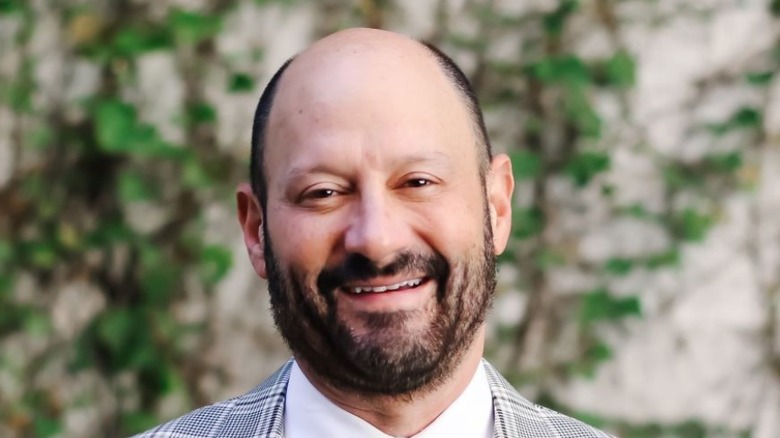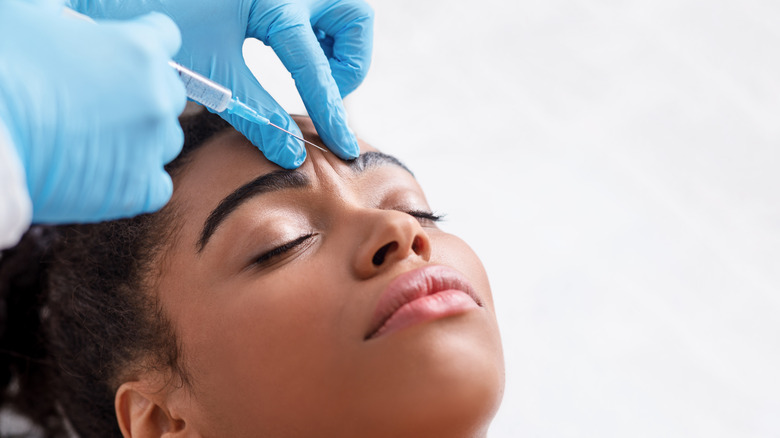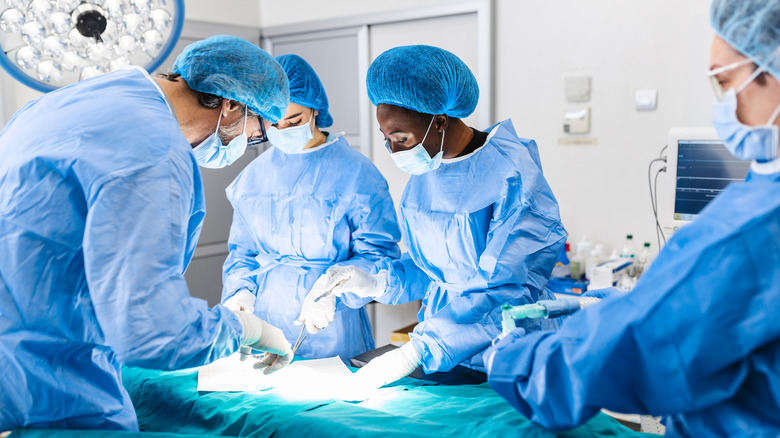Plastic Surgeon Dr. Michael Horn Shares Which Cosmetic Treatments To Avoid In The Summer - Exclusive
As the weather gets warmer and everyone starts spending more time outdoors, it's important to be aware of which cosmetic treatments could put you at risk for sun damage. Health Digest spoke with Dr. Michael Horn, board-certified plastic surgeon, about which treatments to avoid in the summer and why. Dr. Horn explained that chemical peels and facial resurfacing treatments are best done when you won't be spending a lot of time in the sun.
"When undergoing a peel, strong exfoliants remove dead skin cells," he said. "In this state, your skin is vulnerable and sensitive to sunlight, and doctors strongly advise patients to avoid sunlight. Exposure can cause dark spots and hyperpigmentation, which as a result, completely ruins the progress made with the peel. Laser skin resurfacing should be avoided due to the discoloration of the skin that can result from sun exposure."
While body-toning treatments like liposuction can be tempting while you're spending more time in a swimsuit, Dr. Horn cautioned against this procedure. "Post liposuction, patients are required to wear a surgical compression garment for six weeks," he explained. "In the summer heat, that is uncomfortable and inconvenient. Avoiding the sun is essential after liposuction because third-degree burns can occur at the incision site if they are exposed to UV rays. Additional swelling and puffiness may occur as a result of heat and humidity."
Safe treatments and procedures to get in the summer
Fortunately, there are plenty of cosmetic treatments and procedures that are safe to get in the summer. Emsculpt, a body contouring treatment that uses electromagnetic energy to quickly tone muscles, is a great way to define your body for all those beach photos (via Allure). "It is non-surgical and non-invasive. This means no scars and stitching," said Dr. Horn. "It also means no pesky compression garments. Results are not instantaneous, but there is no downtime needed post-procedure."
Other non-invasive procedures that can tone your body include Morpheus8 and Kybella. Dermal fillers and Botox can also freshen up your face without the worry of sun exposure or major recovery times. MiraDry, which is a treatment for excessive sweating, can be safely done in the summer and is a useful procedure for this time of the year.
If you've already had a cosmetic treatment that can be impacted by sun exposure, there are a few things you can do to help yourself heal as quickly and safely as possible. Dr. Horn recommends wearing sunscreen with SPF 30 or higher that is reapplied after sweating or swimming. "As much as possible, stay in the shade and wear an oversized hat as well," he said. "Using a cold pack for pain and swelling is recommended. If undergoing laser treatment, use topical creams or lotions as directed by your plastic surgeon or dermatologist."
What to know about plastic surgery in the summer
It's not the end of the world if you get a cosmetic procedure done in the summer, but you will have to be extra careful about your recovery process. In addition to avoiding the sun, you should drink plenty of water in order to stay hydrated and speed up your recovery. "After an invasive procedure, make sure to carefully follow the post-operative instructions given to you by your plastic surgeon," said Dr. Horn. "Restrictions can include not flying for a period of time, sexual intercourse, swimming/showering, or exercise. None of these are permanent restrictions, however, they should be followed per the physician's recommendations."
Depending on the extent of your procedure, taking a few days to a few weeks off from work can help you recover more quickly. You should also avoid swimming for several weeks after a surgical procedure, no matter how tempting that pool party sounds. Swimming in pool, ocean, or lake water can also increase your risk of getting an infection.
Dr. Horn earned his medical degree at Loyola University in Chicago and he completed a general surgery residency with the Medical College of Wisconsin, as well as a sub-specialty training in plastic surgery with a second residency at Loyola University. He is board certified by the American Board of Plastic Surgery and is a member of the American Society of Plastic Surgeons and the Chicago Society of Plastic Surgeons. More information about him can be found at www.lakeshoreplasticsurgery.com.



